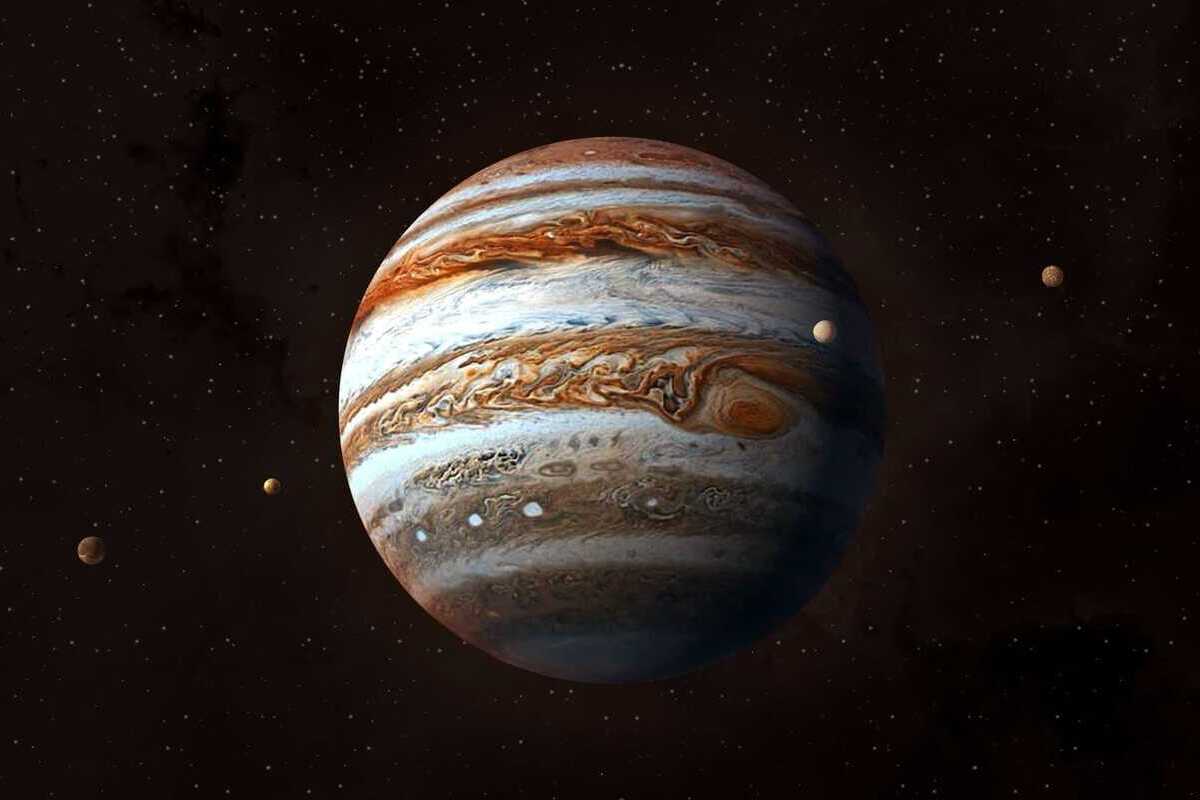Jupiter is not only the largest planet in the Solar System but also one of the most mysterious. It plays a crucial role in shaping the architecture of our planetary system, influencing the orbits of comets, asteroids, and even other planets. With its immense mass, Jupiter has captivated astronomers for centuries, and modern space missions continue to reveal new layers of its complexity. Storms have raged in its atmosphere for hundreds of years, and its moons may harbor the conditions necessary for life. Below is a collection of fascinating facts about Jupiter that you may not have known.
- Jupiter is the largest planet in the Solar System. Its diameter exceeds 143,000 kilometers, which is more than 11 times the diameter of Earth.
- Despite its enormous size, Jupiter rotates faster than any other planet. One complete rotation takes only about 10 hours, causing the planet to bulge at the equator and flatten at the poles.
- Jupiter is composed mostly of hydrogen and helium. As a gas giant, it lacks a solid surface, so there is no ground to stand on beneath its clouds.
- The Great Red Spot is a massive storm in Jupiter’s atmosphere. It has been raging for over 350 years and is large enough to contain three Earths.
- Jupiter has 95 known moons, and the number is still growing. The largest of them — Io, Europa, Ganymede, and Callisto — are called the Galilean moons, named after Galileo, who discovered them in the 17th century.
- Ganymede is the largest moon in the Solar System. It is larger than Mercury and is the only moon known to have its own magnetic field.
- Evidence suggests that Europa contains a subsurface ocean beneath its icy crust. Scientists believe it may host conditions suitable for life, similar to deep-sea hydrothermal vents on Earth.
- Jupiter has the strongest magnetic field of any planet in the Solar System. It is 14 times stronger than Earth’s and creates a massive magnetosphere that extends millions of kilometers into space.
- The planet emits more energy than it receives from the Sun. This is caused by the gravitational compression of its internal layers, which releases heat from within.
- Even though Jupiter is approximately 600 million kilometers from Earth, it can be seen with the naked eye. It is one of the brightest objects in the night sky.
- Jupiter has faint rings that are difficult to observe from Earth. These rings were discovered only in 1979 by the Voyager 1 spacecraft.
- Io, one of Jupiter’s moons, has the most intense volcanic activity in the Solar System. Its surface is constantly reshaped by lava flows and sulfuric eruptions.
- Jupiter’s gravity acts as a protective shield for the inner planets. It captures or deflects many comets and asteroids that might otherwise pose a threat to Earth.
- Jupiter takes about 12 Earth years to complete one orbit around the Sun. Its orbit is more elongated than those of the inner planets, resulting in a longer year.
- The planet’s atmosphere is layered with clouds made mainly of ammonia and water vapor. These layers form the distinctive bands and stripes that encircle the planet.
- Lightning strikes in Jupiter’s atmosphere are much more powerful than those on Earth. This indicates the presence of intense storms and active convection.
- Jupiter likely has a core composed of rock or metal. Surrounding it are layers of liquid metallic hydrogen, which help generate the planet’s magnetic field.
- Scientists believe that Jupiter has a system of internal heat circulation. This drives atmospheric movement and creates the planet’s long-lasting storms and wind systems.
- Jupiter’s atmosphere features alternating zones and belts that rotate in opposite directions. These regions generate wind speeds that can reach up to 600 kilometers per hour.
- The Juno spacecraft, which has been orbiting Jupiter since 2016, is providing unprecedented data about the planet’s gravity field, magnetosphere, and atmospheric phenomena. These findings are helping scientists learn not only about Jupiter but also about the origins of the entire Solar System.
- The planet is named after Jupiter, the king of the gods in Roman mythology. His Greek equivalent is Zeus, emphasizing the importance and power attributed to the planet since ancient times.
- Because of its composition and size, Jupiter is sometimes called a “failed star.” It consists of the same elements as the Sun, but its mass is not sufficient to initiate nuclear fusion.
- Callisto, another of Jupiter’s moons, has one of the oldest and most heavily cratered surfaces in the Solar System. This suggests that its surface has remained unchanged for over 4 billion years.
- Jupiter is studied not only as an individual planet but also as a key to understanding how gas giants form. Its characteristics help scientists interpret the formation and behavior of exoplanets in distant star systems.
Jupiter is more than just a massive planet — it is a dynamic and energetic world full of cosmic mysteries. These interesting facts show that Jupiter plays a vital role in the Solar System and remains one of the most captivating objects of scientific exploration. Studying Jupiter allows us to better understand not only distant worlds but also our own place in the universe.





